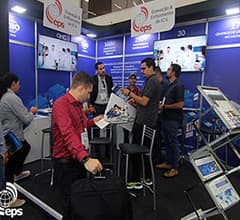Home > News & Blog > Semiconductor Facts
8 Curious Facts about Semiconductors
Every electronic device we interact with today is packed full of semiconductors. Behind the scenes in our cars, phones, laptops and smart appliances is an orchestra of tiny components each with a specific function, coming together to create a symphony. But what exactly is a semiconductor and how exactly do they work? This blog will give you some quick facts about the tiny components running your day-to-day life.
1. Semiconductors are constructed of semiconducting material.
Semiconductors are built on semiconducting material, which is material with electrical conductivity between metals (good conductors) and insulators (poor conductors). It is important to note that the conductivity can be controlled by adding small amounts of other elements. Hence the importance with care in ESD (Electrostatic Discharge), EOS (Electrical Overstress), and MSL (Moisture Sensitivity Level).
2. Chips are complex structures made of millions, or even billions of transistors and other components.
The multitude of components are connected by layers of circuitry. The process of integrating smaller components and packaging them together has made chips more powerful over the years. As Moore’s law states: the number of transistors in a dense integrated circuit (IC) doubles about every two years.
3. Semiconductors are manufactured in special manufacturing facilities called "fabs", short for “Semiconductor Fabrication Plants”.
“Fabs” is short for Semiconductor Fabrication Plants. These fabs contain “clean rooms”, which are enclosed areas with strict controls for air contamination, humidity, and temperature, ensuring that quality is always consistent.
4. It can take up to 500 steps to develop a wafer.
Wafers are highly purified silicon slices which serve as the starting substrate for nearly all chips. Between etching, stripping, and cleaning this process can have up to and beyond 500 different steps to create the desired pattern.
5. In 2021, almost 1.14 trillion chips were sold in the world.
That's about 140 chips for every person on the planet, or 130 million per hour. If all these semiconductors were stacked one on top of another they would extend beyond the maximum cruising altitude for commercial aircraft.
6. The number of elements used in semiconductor manufacturing has grown dramatically as technology has evolved.
The first semiconductor devices were made of germanium, which was quickly replaced by silicon. Today, more elements are still under evaluation, as part of new compounds or for new applications.
7. The two common classifications of chips are logic and memory.
Logic chips perform operations; these include microprocessors - the brains of your cell phone, laptop etc.
Memory chips store data, either temporarily (as in DRAM) or in long-term storage (such as HD drives).
8. The features in today's most advanced chips can be as small as 7nm
That’s almost 10,000 times smaller than the width of a human hair.
Do you have semiconductors you need programmed?
Outsource your IC programming to EPS Global and remove the complexity and considerable time burden of programming from in-circuit test. This will allow you to introduce increased efficiencies on your production line and cost savings to your organization.
We are strategically located in all major automotive electronic clusters worldwide. Our state-of-the-art, fully automated systems will program, 3D coplanarity check, laser mark and tape & reel your product and we can guarantee rapid delivery to help you meet your production deadlines.








